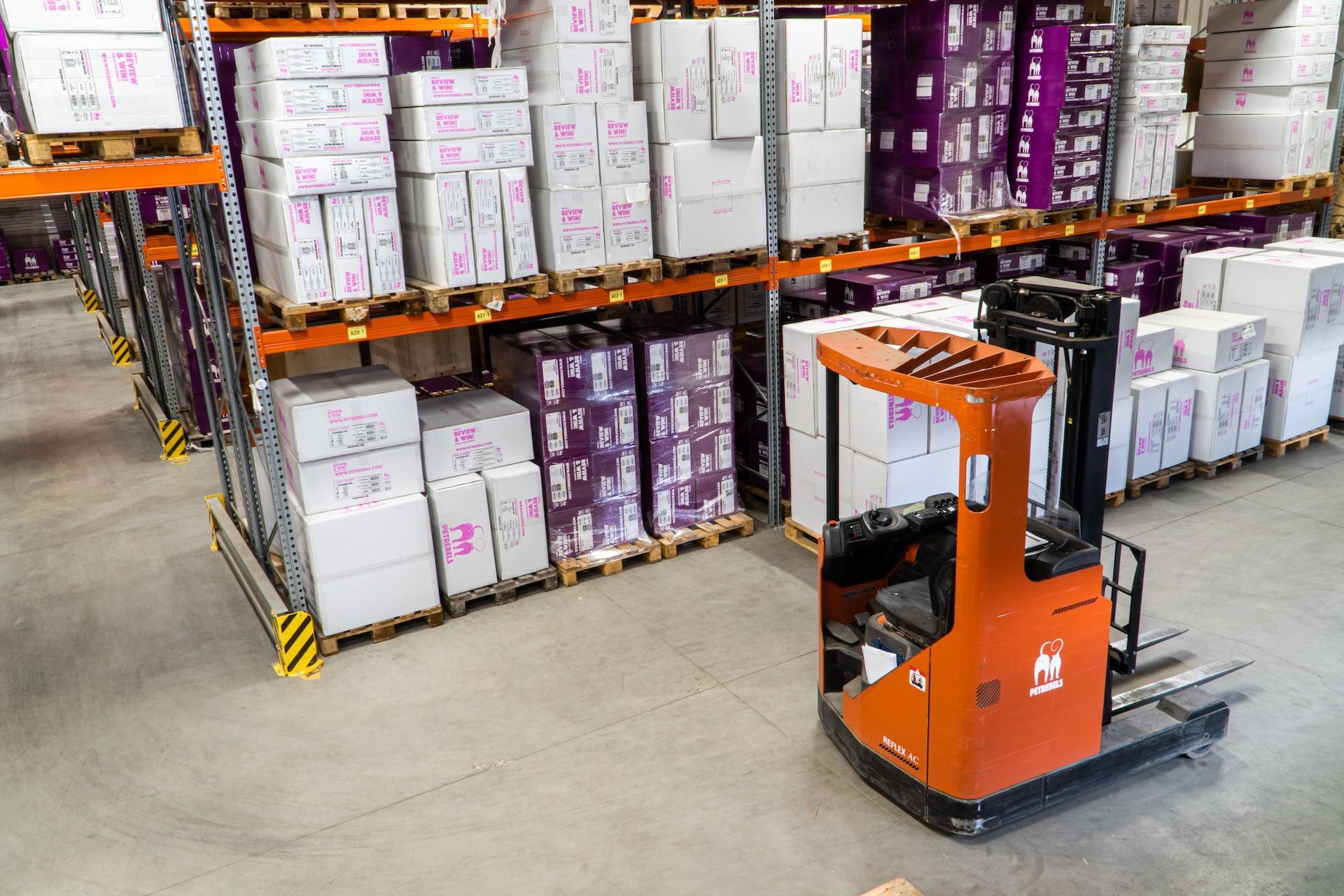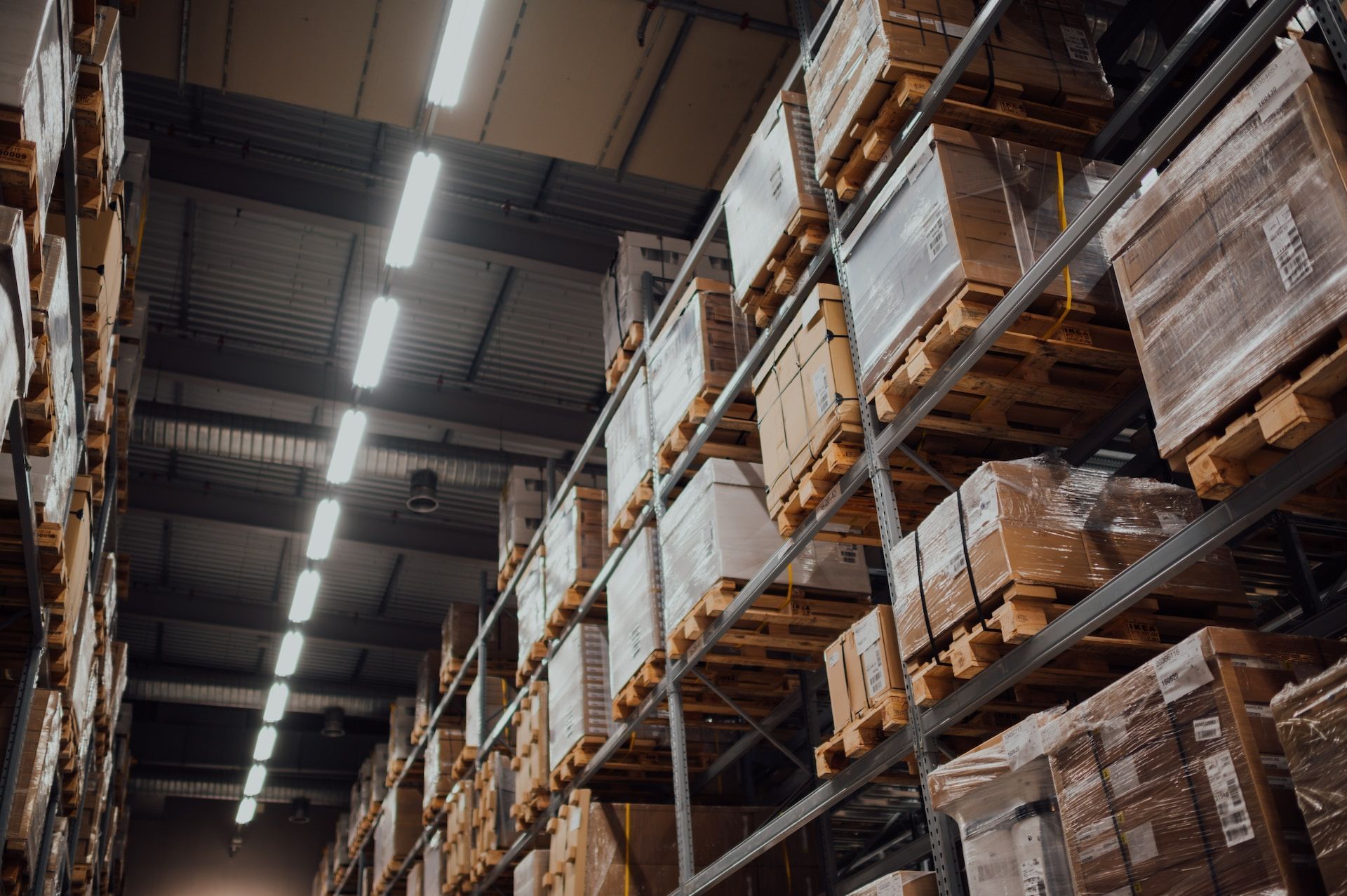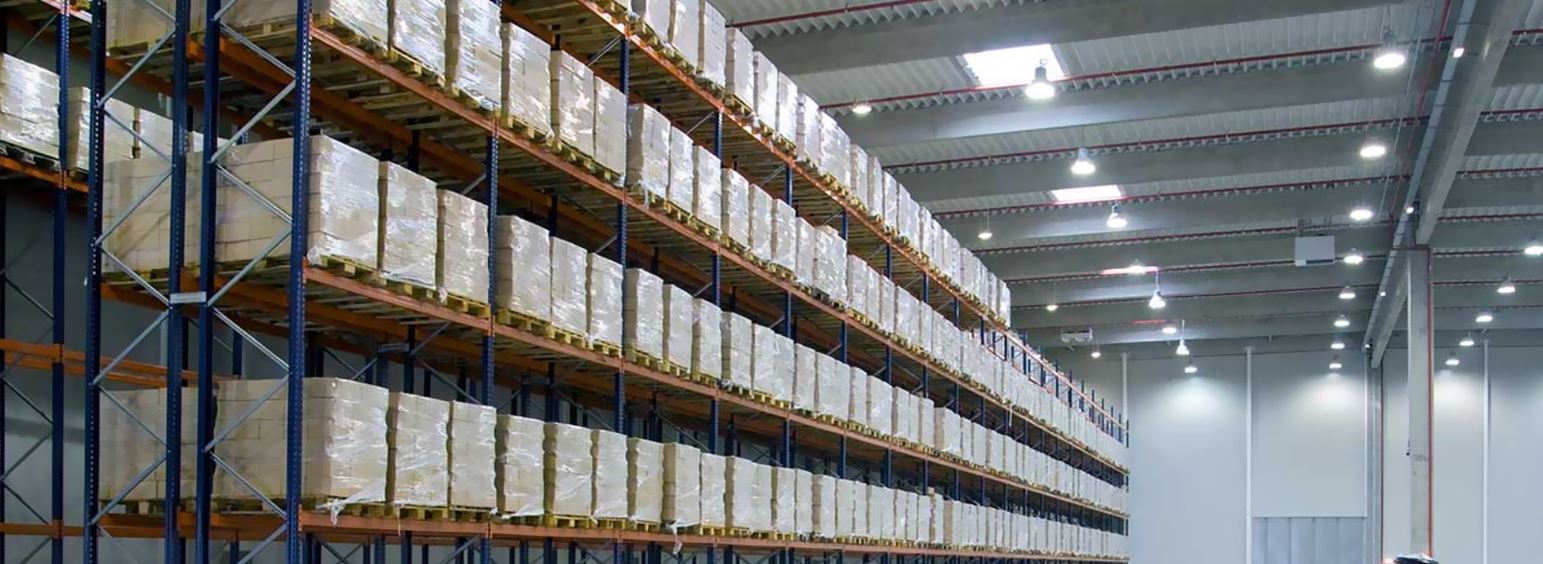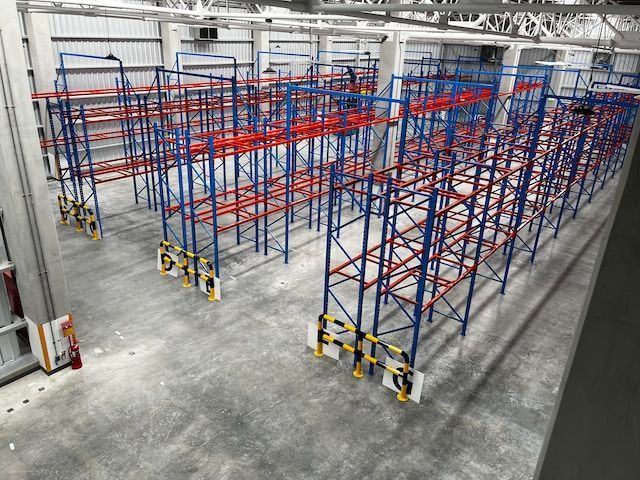Storing Hazardous Materials in a Warehouse: The Facts | RSLNI
- By Jenny Redford
- •
- 16 Aug, 2023
- •
How to handle hazardous materials in the warehouse correctly

Health and safety are imperative in any building, especially a warehouse environment.
In previous articles, we’ve looked at the risks that unsafe pallet racking, out-of-control forklifts, and unsuitable warehouse storage can cause.
If your warehouse handles hazardous materials, there are many other rules and regulations you need to be aware of to ensure safety.
Here’s what you need to know when it comes to storing hazardous materials safely in a warehouse.
- What do you mean by hazardous materials?
- What legislation covers hazardous materials in the UK?
- What are the penalties for storing hazardous chemicals incorrectly?
- How to safely store hazardous materials in a warehouse
Implement a written COSHH policy
Put together a COSHH register
Understand exposure limits
Ensure good ventilation
Store your hazardous materials safely
Train your staff
- High-quality storage cabinets from Racking + Shelving Limited
What do you mean by hazardous materials?
According to the HSE, a hazardous material is any substance that is harmful to health.
Harmful to health’ means anything that causes allergic reactions, rashes, headaches and vomiting, all the way through to long-term and chronic health conditions. For example, it’s estimated that 12,000 deaths are caused by lung disease linked to exposure to hazardous materials at work each year.
When you think of hazardous materials, you may think of dangerous bacteria or chemicals. And while you’d be right, there are some materials out there that you wouldn’t consider hazardous at first glance.
For example, take flour. While flour in itself isn’t harmful, flour dust can irritate the lungs and respiratory system when inhaled, increasing the risk of asthma and other related conditions.
Hazardous materials include, but aren’t limited to:
- Flammable liquids, gases, and solids (e.g. gasoline, paint thinner)
- Explosive materials (e.g. fireworks)
- Corrosive substances (e.g. sulphuric acid)
- Toxic substances (e.g. mercury, cyanide)
- Compressed gases and pressurised containers
- Radioactive materials (e.g. radium, plutonium)
- Reactive chemicals (e.g. peroxides)
- Pesticides, herbicides, and fungicides
- Biohazardous materials (e.g. medical waste, bacteria, viruses)
It may be that you sell these products to customers or use them in the warehouse, for example, for cleaning. Hazardous substances may also be produced as a by-product while carrying out processes like sanding wood or welding.
What legislation covers hazardous materials in the UK?
There are two main pieces of legislation you need to be aware of.
The first is the Health and Safety at Work Act (1974). This act applies to all warehouses regardless of whether they store hazardous materials or not. With the Health and Safety at Work Act, employers must ensure the health, welfare, and safety of all employees, as well as people on-site.
The second is the Control of Substances Hazardous to Health Regulations (2002), commonly known as COSHH. COSHH requires employers to identify hazardous materials, implement measures to reduce harm to health, and enforce and monitor them accordingly.
Bear in mind that COSHH doesn’t cover asbestos, lead, or radioactive substances – these materials have their own specific regulations.
Other pieces of legislation may come into play depending on the type of hazardous substance. For example, the Dangerous Substances and Explosive Atmospheres Regulations (2002) apply to substances that can cause fire, explosions, or corrosion.
What are the penalties for storing hazardous chemicals incorrectly?
Failing to comply with COSHH can lead to severe penalties for your business. You can receive an unlimited fine and/or jail sentence, and disqualification from being a company director.
While this incident did not happen in a warehouse environment, a UK business was fined £180,000 for exposing employees to hazardous chemicals. This led to several employees suffering from dermatitis.
How to safely store hazardous materials in a warehouse
So now that you know the dangers of hazardous materials, how can you store these substances in a safe and controlled way? Here’s what you need to know.
1. Carry out a risk assessment
The first step in safely managing and storing hazardous materials in a warehouse is to identify the risks and how you can mitigate against them. You can do this with a COSHH risk assessment.
A risk assessment allows you to:
- Identify the hazardous materials you store or generate
- Identify how these materials are harmful to health and the risk of them causing problems
- Determine what you need to do to comply with the regulations
Some hazardous materials (for example, chemicals) come with a safety data sheet. This provides information on how the materials should be handled and stored. You can use these sheets to steer your risk assessment.
If you have more than five employees, you must record any significant findings and make this record available to employees and third parties. There isn’t a specific template you need to use for this, so use a template that works best for your needs.
It’s important that this risk assessment is reviewed regularly. This frequency will depend on the level of risk and how likely changes will occur.
2. Implement a written COSHH policy
It’s a legal requirement to have a written COSHH policy in place if you deal with hazardous substances. This policy documents and communicates the measures you have in place to protect employees and stay compliant.
Your policy should also detail everyone’s roles and responsibilities when it comes to staying safe, and be updated on a regular basis.
3. Put together a COSHH register
A COSHH register isn’t a legal requirement, but it can be a useful document to include in your policy.
A COSHH register is a list of all the hazardous substances in your warehouse, including where they are used, where they are stored, and when they were last accessed.
4. Understand exposure limits
Some hazardous substances have workplace exposure limits, or WELs. You need to ensure that employees do not exceed these limits, and put safety measures in place.
You can find an up-to-date list of all WELs on the HSE website.
If a substance or material doesn’t have a WEL, this doesn’t mean it is safe. You still need to ensure that employees have minimal contact with these substances.
5. Ensure good ventilation
It’s essential to make sure there is good ventilation in place. By removing indoor air and bringing in fresh air from outside, you’re reducing the concentration of hazardous substances.
Plus, good ventilation can improve concentration and boost employee morale!
Natural ventilation (i.e. opening doors and windows) is the easiest and most cost-effective way to ventilate a building, but this can be hard to do in a large warehouse space. Mechanical ventilation may be more efficient but is more expensive.
You can also use local exhaust ventilation (LEV) to remove fumes and contaminants from a specific area.
6. Store your hazardous materials safely
Your risk assessment and register will have identified the hazardous substances in your warehouse. It’s vital that these materials are stored safely.
We recommend designating a specific area for hazardous materials that is kept well-ventilated and free from potential sources of ignition. This area should only be accessible to trained and authorised personnel.
Hazardous materials should be clearly labelled, with access to the relevant safety data sheets where appropriate. Different types of hazardous materials should be kept separate; for example, flammable materials should be kept away from oxidisers.
A COSHH cabinet can be a great way to store hazardous substances and ensure that only certain people can access them. For example, if you have cleaning substances that you only want the cleaners and caretakers to be able to use. These cabinets are lockable and leak-proof to ensure spills stay contained.
7. Train your staff
It’s crucial that all your staff, even if they don’t directly handle hazardous materials, are trained. This ensures they stay safe and know what to do in an emergency.
Make staff aware of your COSHH policy at onboarding and offer comprehensive training to those that handle hazardous materials. It’s important that they also know what personal protective equipment (PPE) they need to use and what to do if they start to feel unwell.
Your staff should also know who their designated first aider is, and who to speak to if they are concerned about safety.
High-quality storage cabinets from Racking + Shelving Limited
We hope this comprehensive article has explained what you need to do with hazardous materials in the workplace.
Even if you have a small amount of hazardous materials for cleaning, it’s essential to include them in your risk assessment and safely lock them away when not in use.
If you’re looking for durable and safe storage solutions, we’re here to help. Our COSHH, medical, and toxic cabinets will keep your warehouse safe and ensure you fulfil your health and safety obligations.
Contact us today to find out how we can help with your storage needs.









